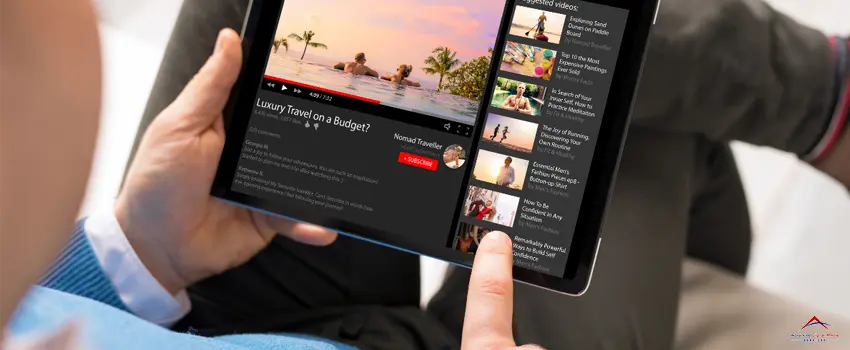SEO video content has become increasingly popular over the years, and with good reason – videos have proven to be an effective means to communicate ideas, showcase products, and build engagement with audiences. Video content isn’t just popular for entertainment; it’s also highly desired by consumers as a means of brand engagement. Indeed, a recent study indicates that up to 91% of consumers would like more online video content from brands. However, more than simply creating videos is required; to be successful, you need to optimize your video content for SEO.
In this blog, we’ll share the top hacks for ranking SEO video content and boosting your online visibility. We’ll start by defining video optimization in SEO and move on to providing invaluable information about the technical SEO components that ensure your content reaches your audience.
What is video SEO?
Video SEO (search engine optimization) is optimizing your video content to increase visibility and rank higher in search engine results pages (SERPs). It involves optimizing various elements of your video content, such as the title, description, and tags, to make it more easily discoverable by search engines.
Video SEO aims to improve the chances of your video being found by users searching for relevant keywords or phrases, increasing the chances of more views, engagement, and conversions. Optimizing your video content for SEO can enhance your online visibility and maximize the impact of your video marketing efforts.
SEO for Video Content Tips and Tricks
Integrating your SEO and video strategy can significantly enhance your marketing efforts. To achieve this, you can follow these steps to improve your video optimization and drive more traffic and video views:
1. Conduct keyword research.
Identifying relevant and high-traffic keywords increases your videos’ visibility and discoverability in SERPs. Keyword research helps you understand your audience’s language to search for your video content. It enables you to identify opportunities for targeting specific topics or keywords that align with your video content and goals.
Here are some tips for finding relevant and high-traffic keywords:
- Focus on long-tail keywords specific to your video content and target audience.
- Analyze the keywords used by your competitors and industry leaders.
- Use keyword research tools to identify high-traffic and low-competition keywords.
- Consider the search intent of your target audience and create video content that addresses their needs and interests.
- Regularly test and refine your keywords to ensure your video content is optimized for SEO.
2. Technical SEO Components: Optimize video titles, descriptions, and tags.
Video titles, descriptions, and tags provide search engines with relevant information about the content of your video, helping them understand what your video is about and rank it accordingly in search results.
Here are some tips for creating optimized titles, descriptions, and tags:
- Keep titles concise and descriptive, including relevant keywords that accurately reflect the content of your video.
- Use descriptive and engaging language in your video descriptions to entice viewers to watch your video.
- Add relevant tags that accurately describe the content of your video and the keywords you are targeting.
- Include a call-to-action in your video description to encourage viewers to engage with your content and visit your website or social media channels.
- Avoid using clickbait or misleading titles and descriptions, as this can harm your credibility and lead to a high bounce rate.
3. Create engaging and informative SEO video content.
It is not enough to create a video; it must capture the viewer’s attention and provide them with the information they seek. Here are some tips for creating high-quality video content:
- Identify the target audience and their pain points to address them in the video content.
- Keep the video short and to the point. The optimal video length is typically around 2-3 minutes.
- Use clear and concise language, and avoid technical jargon or complex terminology that may confuse the viewer.
- Incorporate visuals and animations to help illustrate key points and make the video more engaging.
- Add a call-to-action at the end of the video optimized for SEO to encourage viewers to take the desired action.
Here are some best practices for keeping viewers engaged:
- Use a hook at the beginning of your video to capture the viewer’s attention and encourage them to keep watching.
- Use a conversational tone and speak directly to the viewer to make them feel involved in the video.
- Use storytelling techniques to create an emotional connection with the viewer.
- Use humor and personality to make the video more relatable and entertaining.
- Use pacing and editing to keep the video dynamic and avoid boring viewers.
4. Promote videos on social media and other platforms.
Promoting videos on social media and other platforms is crucial for increasing visibility and driving traffic to your content. Here are some tips to help you effectively promote your videos:
- Share on social media: Share videos optimized for SEO on social media platforms like Facebook, Twitter, and LinkedIn. Be sure to include a compelling headline and an engaging description to capture your audience’s attention.
- Use hashtags: Use relevant hashtags to reach a wider audience and increase the chances of your videos being discovered by people searching for that topic.
- Embed videos on your website: Embedding videos can help increase engagement and keep visitors on your site longer. This can also help improve your website’s search engine rankings.
- Leverage other platforms: Consider leveraging online communities, forums, and discussion boards to share your video content with a broader audience.
5. Analyze video performance and make adjustments.
After creating and promoting videos, it’s essential to analyze their performance to determine what is and isn’t working. This step is crucial in improving future video content and increasing visibility.
Here are examples of tools for analyzing video performance:
- YouTube Analytics provides comprehensive data on audience retention, engagement, demographics, and traffic sources.
- Google Analytics tracks website traffic generated by video content.
- Social media analytics monitors engagement, reach, and other metrics for videos posted on social media.
Key Takeaway
SEO video content requires a holistic approach that involves conducting thorough keyword research, selecting the right hosting platform, creating engaging and informative content, and promoting the content through social media and other platforms. Analyzing video performance regularly and adapting to improve the video’s ranking and visibility is also essential. By implementing these top hacks, businesses and creators can improve their chances of ranking their video content higher in search engine results and reaching a wider audience.
Rank ahead of the pack today!
Optimizing your video content for SEO can be a game-changer for your online presence and business success. If you feel overwhelmed or need help implementing these strategies effectively, consider hiring an experienced SEO company to guide you.
An SEO company in Westlake, Oh, like Advanced Digital Media Services, has the expertise to take your video SEO efforts to the next level. Reach out to ADMS and rank your videos and website ahead of the competition today!





